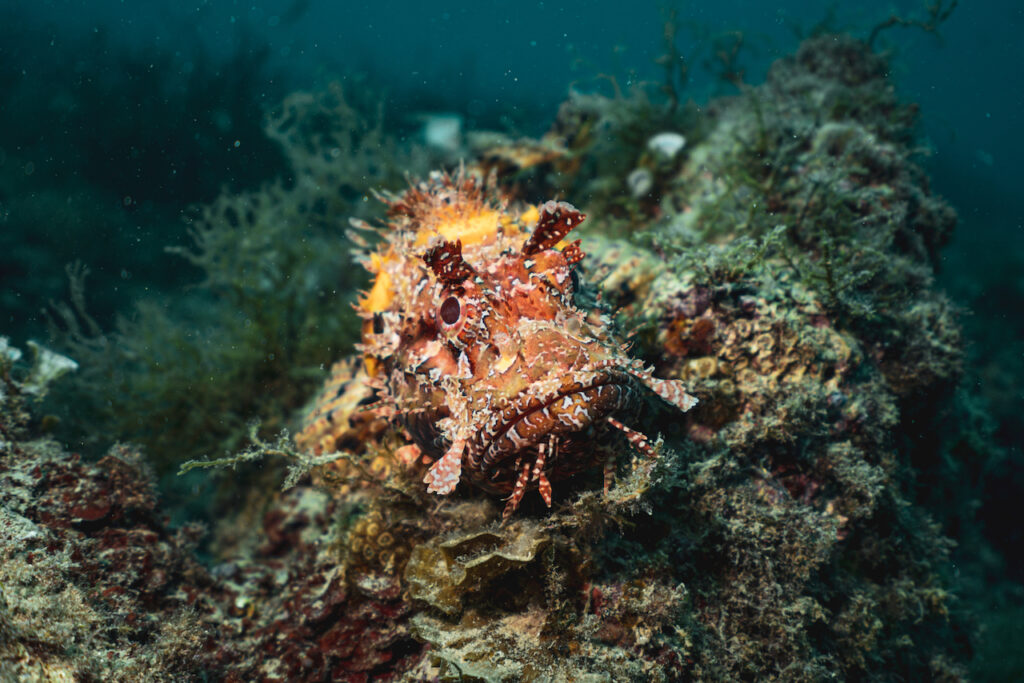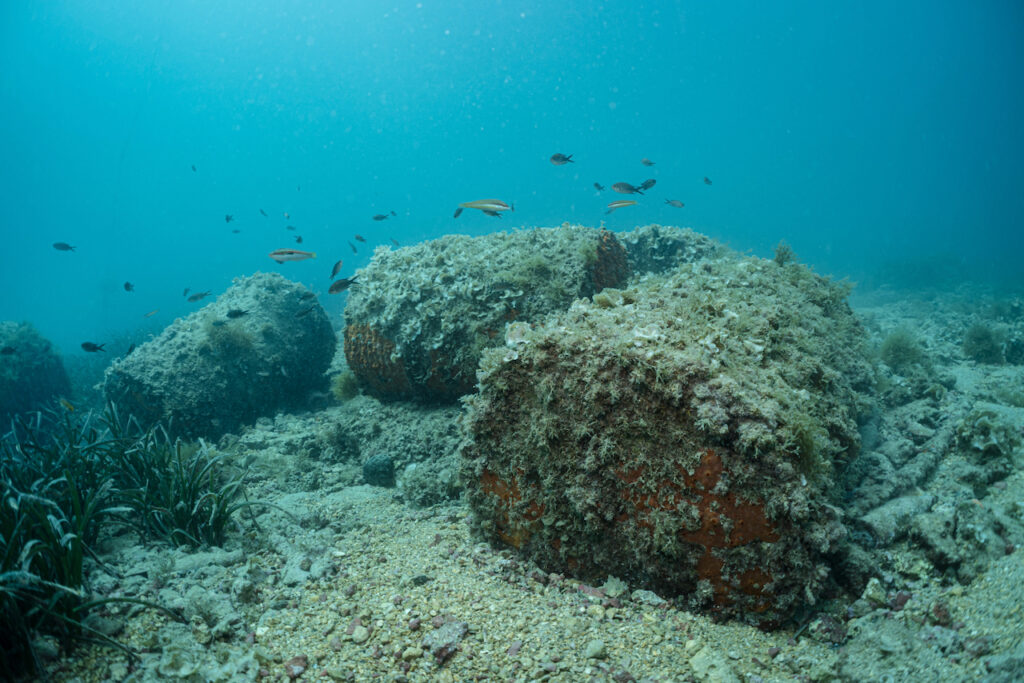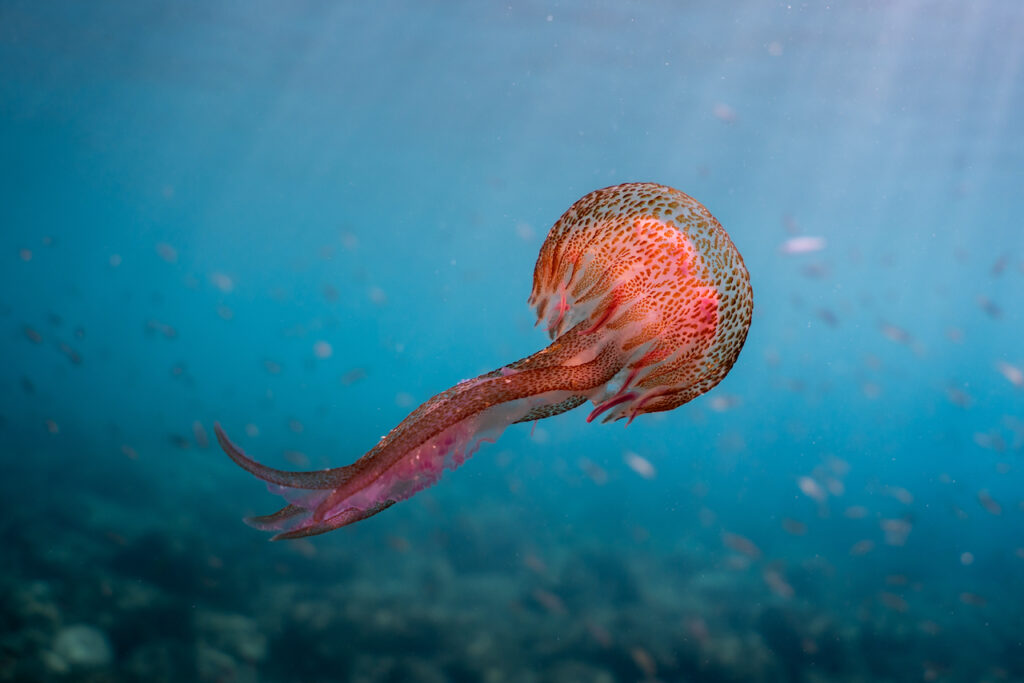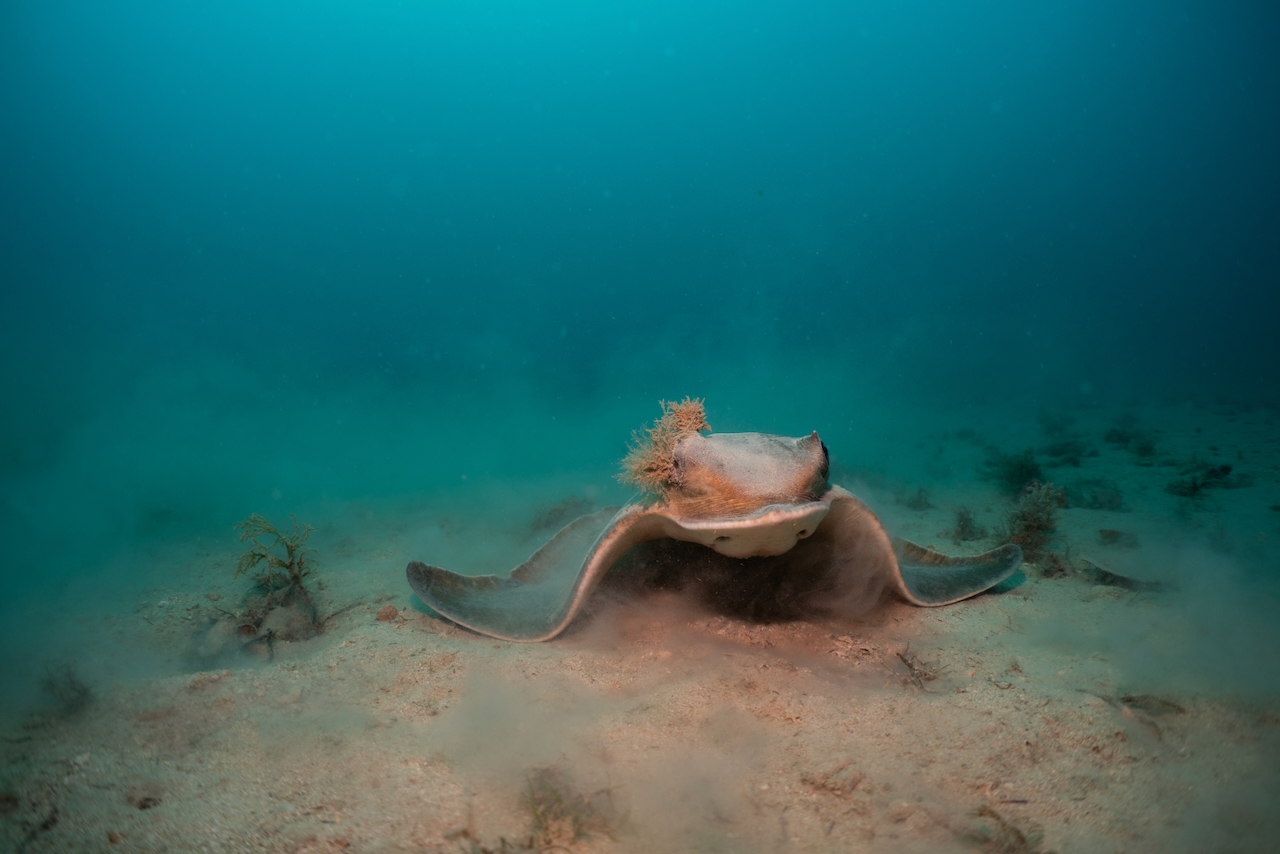Over the last 20 years, Mallorca in Spain has protected its coastline and established marine protected areas to safeguard the island’s marine life. Notably, the El Toro Marine Reserve, situated between Magaluf and Port Andratx, has significantly increased the abundance and diversity of underwater species since its establishment in 2004. With over 60,000 hectares protected, Mallorca is one of the European leaders in developing Marine Protected Areas.
Because Marine Protected Areas (MPAs) exist to protect marine life, these spots are ideal for diving. Considering the entire coastline of El Toro is a Marine Protected Area, diving here offers an incredible experience.
On a boat dive from Santa Ponca to El Toro island, we saw barracudas hunting in the shallows, three groupers hovering above seagrass meadows, and an astonishing number of sea bream moving between the stunning underwater landscape.
Shore dives within the El Toro Marine Reserve, such as Ses Penyes Rotges and Port Adriano, provide visibility of 10 to 20 meters (30 to 66 feet). Schools of salema swim among rock formations, while octopuses hide on the outskirts of their dens.
 A cryptic red scorpionfish perched on a boulder.
A cryptic red scorpionfish perched on a boulder. Giant concrete boulders protect Port Adriano, creating a home for marine life.
Giant concrete boulders protect Port Adriano, creating a home for marine life. A red jellyfish (Pelagia noctiluca) near Port Adriano.
A red jellyfish (Pelagia noctiluca) near Port Adriano.
El Toro’s MPA is a 2952-hectare reserve that stretches from Cap de Cala Figuera to Puntas des Castellot. This coastline is located just a 40-minute drive from Palma de Mallorca Airport, where rental cars are available. Some dive centers offer transfers from nearby hotels and resorts, which often provide transfers from the airport. Public transport and taxi services are also available.
Find a PADI Dive Center in Mallorca
Cabrera Island Marine Reserve: Located a one-hour boat ride away from Mallorca, the pristine coastline of this island is home to spectacular marine life. Migjorn Marine Reserve: This marine reserve is at the southern coast of Mallorca. It is home to a rich variety of marine life. You can find over 200 species of fish, as well as dolphins, whales, and turtles. Malgrats Islands: The Malgrats Islands are two uninhabited islands off the west coast of Mallorca across from the bay of Santa Ponça. They are known for their seagrasses and diverse marine life. Cala Ratjada / Llevant: This area was declared an MPA to counter the effects of commercial fishing. It is now home to more than 900 species of marine animals and plants. Sa Dragonera: This is an uninhabited island on the west coast of Palma Mallorca known for its crystal-clear water. It is home to a 50-meter (150-foot) vertical wall where divers can experience spectacular marine life and unique rock formations.Divers usually require permits to dive in the MPAs of Mallorca. Because of this, it is easier if divers participate in an organized tour with a licensed operator. Any touching or disturbance of the marine flora and fauna is strongly discouraged and often prohibited. Of course, this should not be a problem for any PADI diver. (In some locations, spearfishing is allowed with a permit.) Speak to a local PADI Dive Center to find out more.
While the marine life can still be impressive outside of the MPAs (such as our encounter with an eagle ray hunting on the sand), the diving conditions are generally better within them. The reserves have fewer traces of human activity and significantly more pristine diving conditions.
 Eagle ray (Myliobatis aquila) outside the Marine Protected Area
Eagle ray (Myliobatis aquila) outside the Marine Protected Area
The best time to dive is from May to September, when water temperatures range from 20 to 26°C (68 to 79°F) and visibility is excellent. This period is also great for exploring Mallorca’s rich marine biodiversity. You can expect to experience sightings of large schools of fish, rays, and the occasional dolphin or turtle.
Outside this season, Mallorca’s underwater world is stunning, too. With water temperatures averaging around 14°C (57°F) in the colder months (December to April), drysuit diving becomes a valuable skill. A few PADI dive centers in Mallorca offer the PADI Drysuit Diver course. This course allows divers to explore the deeper and colder waters, reaching depths of up to 30 meters (100 feet) while staying comfortable. This course opens up new dive spots and ensures a comfortable diving experience in colder waters.
Consider diving in the Marine Protected Areas in Mallorca on your next trip. The marine life might hold more than one surprise, and if the water is too cold, a dry suit is always an option.

This blog was written by Guest Writer Gunnar Oberhösel, a German PADI Freediver and PADI Pro based in South Africa. He loves traveling and exploring dive sites around the world. For more information about his experience diving in Marine Protected Areas in Mallorca, reach out to Gunnar here.
Share This